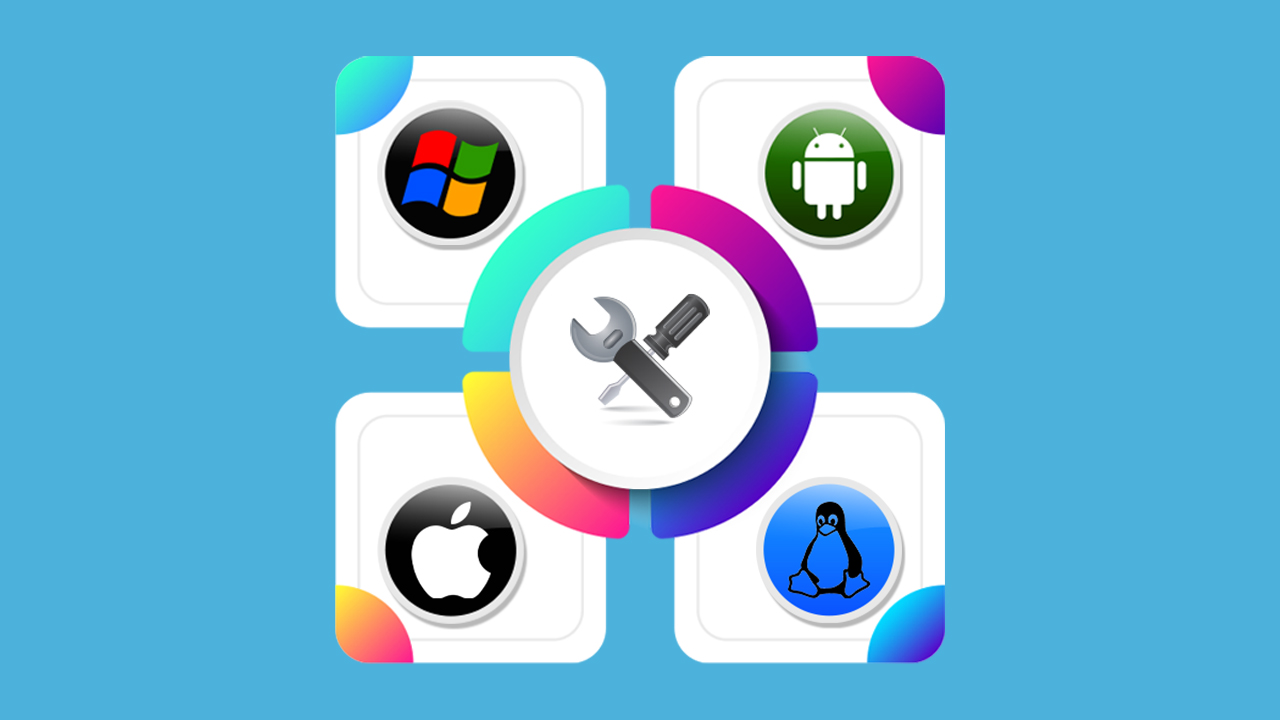If there’s one thing tech teams love to debate, it’s which operating system reigns supreme. But ask any seasoned developer, and they’ll tell you: the future isn’t about picking sides. It’s about harmony.
Multi-OS product development is becoming less of a luxury and more of a necessity. Whether it’s Windows, macOS, iOS, Android, or even Chrome OS, products need to adapt seamlessly across platforms.
So, how do we see this evolving in the next few years? And what does it mean for developers and businesses investing in product development services? Let’s explore.

Why Multi-OS Matters More Than Ever?
Consider this: in 2025, Statista reports over 6.5 billion smartphone users worldwide, and desktops and laptops aren’t slowing down either. The fragmentation of devices means your product can no longer thrive in a single ecosystem.
Users switch devices, experiment with cloud-based platforms, and expect a consistent experience—whether they’re on a Pixelbook at a café, an iPhone on a train, or a Surface Pro in a meeting room.
Developers face a familiar dilemma: build natively for each OS, risking duplicated effort, or adopt a cross-platform strategy that might compromise user experience. The rise of product development services that specialize in multi-OS solutions is a clear indicator that businesses recognize the stakes.
The Cross-Platform Conundrum
Frameworks like Flutter, React Native, and Xamarin have transformed cross-platform development. They promise faster releases, shared codebases, and lower costs. But there’s a catch: performance inconsistencies and platform-specific quirks can sneak in.
Imagine pushing a feature to iOS that renders flawlessly, only to find it looks jittery on Chrome OS or lags on Android tablets. That’s where deep knowledge of each OS’s architecture still matters. The truth is, some nuances—gesture handling, notifications, and even file system behavior—require tailored tweaks.
In the next few years, expect hybrid approaches: cross-platform frameworks for shared logic, paired with light native modules to polish user experience.
AI and Automation: The Quiet Game-Changers
AI isn’t just about recommending Spotify playlists anymore. In product development, machine learning can now anticipate OS-specific bugs, optimize memory allocation, and even suggest UI adjustments for different screen sizes.
Tools like Microsoft’s Visual Studio IntelliCode and JetBrains Fleet are already helping developers write smarter, more adaptive code.
Automated testing on multiple OS environments is also evolving. Services like BrowserStack and Sauce Labs allow real-time testing across hundreds of devices. No more relying on a handful of phones or laptops—your app can be stress-tested on Chrome OS, Windows 11, macOS Ventura, iOS 18, and Android 16 in parallel.

Progressive Web Apps and the Chrome OS Angle
Chrome OS has quietly become a playground for cloud-first strategies. PWAs (Progressive Web Apps) are particularly effective here, bridging the gap between web and native applications.
Unlike traditional apps, PWAs install instantly, take minimal storage, and update automatically—perfect for lightweight devices and educational settings.
Think about students using Chromebooks in classrooms. They rarely install full desktop apps, yet they still expect full functionality. Product development teams increasingly design web-first solutions that gracefully adapt across touchscreens, keyboards, and styluses.
The Design Challenge Across Devices
Designing for multiple OS platforms is more than just scaling a UI. Each system has its conventions—macOS loves subtlety and precision, Windows prefers clarity and structure, Android embraces flexibility, and iOS focuses on gesture-driven interactions.
A multi-OS strategy demands adaptive layouts, responsive typography, and modular components that rearrange intelligently.
Designers often use Figma or Sketch to create adaptable prototypes, but the real art lies in anticipating user habits on each platform. A scroll gesture that feels natural on an iPad might be awkward on a Chromebook touchscreen.
Security Considerations: One Size Doesn’t Fit All
Another critical factor often overlooked in multi-OS development is security. Each OS has its own encryption protocols, sandboxing rules, and update schedules. A vulnerability patch on macOS might come months before Android, leaving gaps if a product isn’t prepared.
Forward-thinking teams are integrating security testing early in development. Static analysis tools and containerized test environments help simulate potential breaches across different platforms. After all, consistency is great—but only if it’s safe consistency.
Emerging Trends to Watch
Several trends suggest the next phase of multi-OS development will be more integrated, intelligent, and user-focused:
- Low-Code and No-Code Platforms: Tools like OutSystems or Mendix are reducing barriers for multi-OS deployment, enabling faster iterations without sacrificing platform-specific nuances.
- Cloud-Native Applications: Cloud-first apps are inherently device-agnostic, allowing seamless transitions from desktops to tablets to smartphones.
- Edge Computing Integration: Especially for IoT-heavy products, edge devices require OS-aware coding for real-time responsiveness.
- Adaptive AI Interfaces: AI-driven personalization can now adjust UI/UX dynamically based on OS and device characteristics.
The Human Factor: Collaboration Across Specialties
Here’s the catch: multi-OS development isn’t just a technical challenge; it’s an organizational one. Teams often struggle with communication between OS specialists—iOS, Android, Windows, Linux, and Chrome OS experts. Knowledge silos can delay releases and inflate costs.
The future points toward blended roles: developers who understand multiple ecosystems, designers fluent in cross-device user behavior, and QA specialists who can simulate multi-OS scenarios. The real value lies not just in the tools but in fostering a culture where expertise crosses boundaries fluidly.
Predictions for the Next 3–5 Years
- Unified Tooling Will Improve: IDEs and CI/CD pipelines will support multiple OS outputs natively, reducing friction.
- Web Technologies Will Keep Gaining Ground: With PWAs and cloud-first apps, even desktop-bound workflows will become more browser-agnostic.
- AI-Enhanced Code: Predictive code generation and platform-specific optimization will shrink release cycles.
- Modular Architecture Dominates: Microservices and component-based design will allow features to be shared without compromise across platforms.
- User Experience Takes Center Stage: Multi-OS products will be judged less by feature parity and more by seamless, intuitive interactions across devices.
Summing it up
The era of single-OS dominance is fading. Multi-OS product development is no longer a “nice-to-have”; it’s a strategic necessity. Developers and businesses must embrace hybrid strategies, AI assistance, adaptive design, and proactive security to keep pace with evolving user expectations.
Whether you’re targeting iPhones, Chromebooks, Android devices, or desktops, the goal is the same: a product that feels coherent, responsive, and intuitive—wherever your users are.
The takeaway? Don’t chase trends blindly. Understand the unique strengths of each OS, leverage the right tools, and remember that even the smallest design choices ripple across every device.
In the end, successful multi-OS development isn’t about the OS—it’s about creating an experience that simply works, no matter where it lands.
